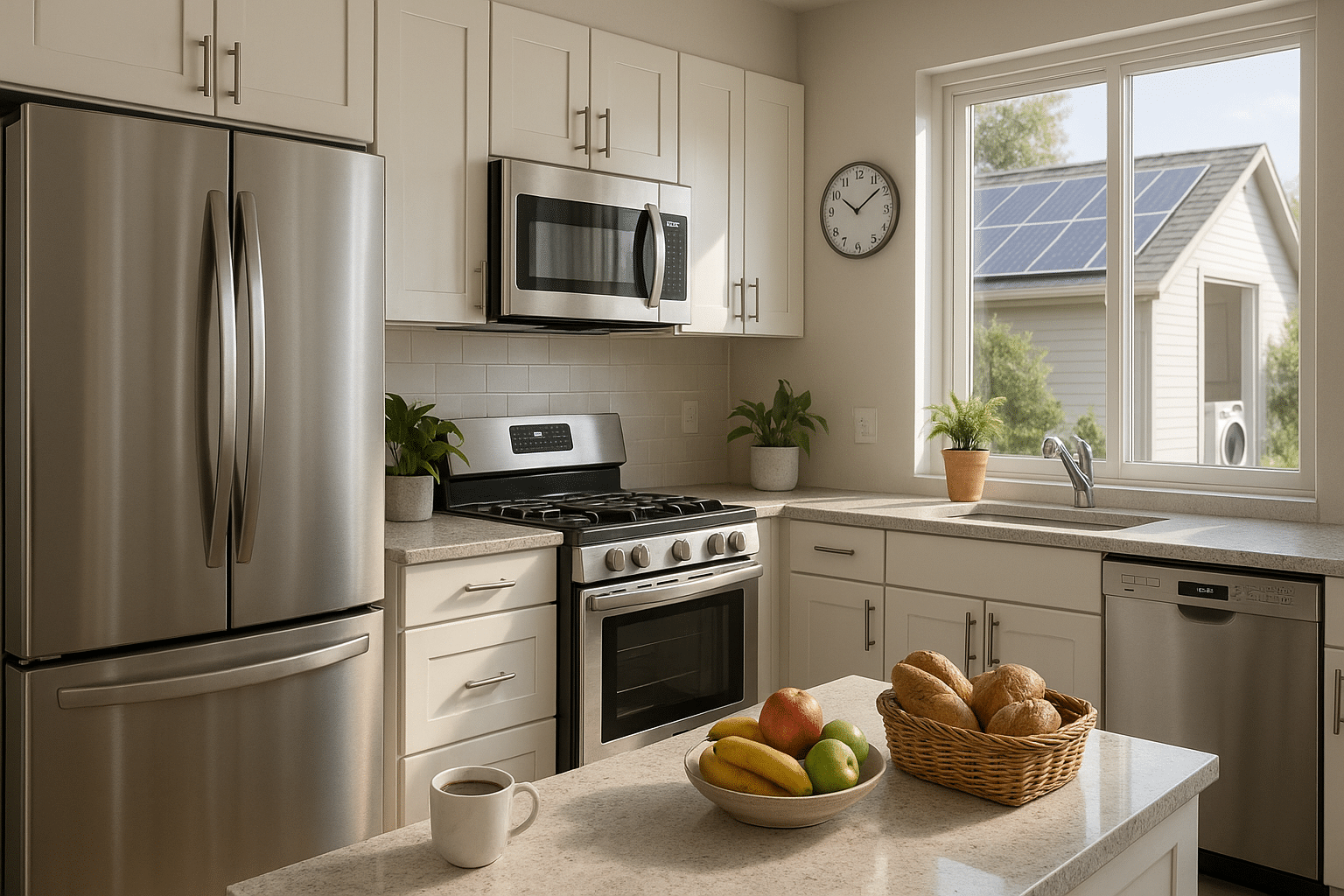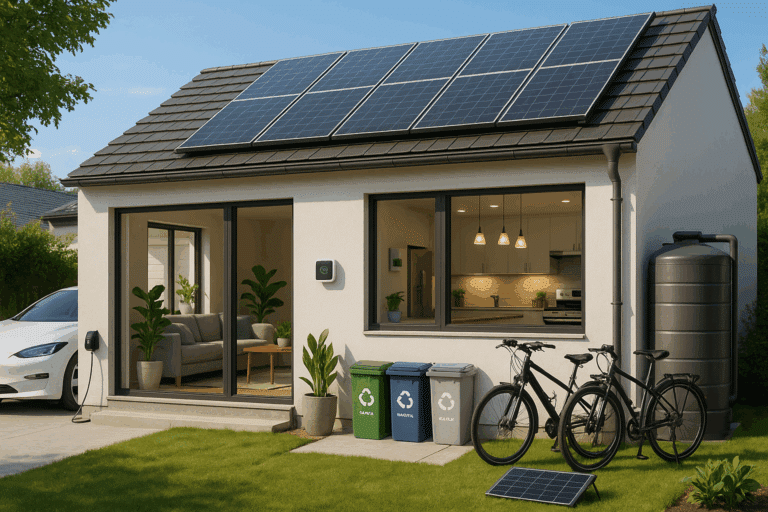Intriguing, isn’t it?
This article will introduce you to the concept of “peak” and “off-peak” times for using your household appliances, how it impacts your energy bill and, more importantly, how you can manipulate these time slots to optimize your energy usage.
The world of energy usage is much more intricate than you might think. Just like traffic on a highway, there are rush hours, slow periods, and everything in between. Your electricity network is no different. There are times of the day when the demand for electricity soars high (peak times), and times when it drops significantly (off-peak times). This pattern impacts not only the energy supply chain but also your wallet.
Let’s think about it for a second. If you’re using your appliances during peak times, when everyone else is also doing the same, it puts an enormous strain on the energy grid. As a result, energy providers often charge more during these periods. This phenomenon is known as ‘time-of-use’ tariffs. Sounds unfair, right? But don’t worry, there’s a way around it. 🚀
Can You Manipulate Your Energy Usage?
Yes, you can! By understanding and strategically planning your appliance usage around these peak and off-peak times, you can potentially save a substantial amount on your energy bills. It’s a little bit like beating the system at its own game. This method of energy management is known as “load shifting.” However, it’s not as easy as it sounds, and that’s where this guide comes in.
This comprehensive guide is designed to unravel the nuances of peak and off-peak energy usage, the best time of day to use your appliances, and tips to shift your loads effectively. It’s all about making the most of your energy usage and doing it efficiently.
Along the way, we’ll delve into the specifics of various appliances, shedding light on the energy consumption of typical household appliances like your washing machine, dishwasher, and even your electric vehicle. After all, not all appliances are created equal when it comes to energy usage. 💡
One thing is sure: By the end of this guide, you’ll be equipped with the necessary knowledge and tools to optimize your energy usage. It’s time to take control of your energy consumption, reduce your carbon footprint, and potentially save money on your bills.
So, are you ready to unlock the secrets of energy management and learn the best time of day to use your appliances for maximum efficiency and savings? Let’s dive right in! 🔑
Introduction: Unraveling the Time-Energy Connection for Your Appliances
It’s no secret that energy efficiency is a hot topic in the current era. As homeowners, we are constantly searching for ways to reduce our energy consumption, not just for the sake of our wallets, but also for the environment. However, did you know that the timing of when you use your appliances could significantly impact your energy usage and costs? This concept, often overlooked, is a game-changer in your quest for energy efficiency. In this article, we’ll be exploring the best times of day to use your appliances for maximum efficiency and savings. So, let’s dive into this energy-saving journey!
Understanding Peak and Off-Peak Hours
Before we delve into the specifics of each appliance, it’s crucial to understand the concept of peak and off-peak hours. These terms are used by energy companies to describe the times of day when demand for electricity is highest (peak) and lowest (off-peak). During peak hours, the demand is high, making electricity more expensive and the grid more strained. On the other hand, during off-peak hours, demand is low, making electricity cheaper and the grid less stressed.
While the exact timing can vary depending on your location and energy provider, peak hours typically fall during the late afternoon and early evening when most people are home from work and school. Off-peak hours, meanwhile, generally occur overnight and during the early morning. To find out your specific peak and off-peak times, you can contact your energy provider or check their website.
The table below provides a general overview of peak and off-peak hours:
| Time of Day | Peak or Off-Peak? |
| Early Morning (around 3 AM – 9 AM) | Off-Peak |
| Late Morning to Early Afternoon (around 9 AM – 4 PM) | Moderate Peak |
| Late Afternoon to Early Evening (around 4 PM – 9 PM) | Peak |
| Overnight (around 9 PM – 3 AM) | Off-Peak |
Maximizing Appliance Efficiency: When to Use Your Appliances
Dishwasher
Contrary to what many may believe, running your dishwasher at night can save you a significant amount of energy. Dishwashers are power-hungry appliances. They require a substantial amount of electricity to heat the water and run the various wash and dry cycles. So, try to run your dishwasher during off-peak hours, such as late at night or early in the morning.
Washing Machine and Dryer
Similarly to dishwashers, washing machines and dryers are also high-energy-consuming appliances. It’s best to use them during off-peak hours. Additionally, consider using a cold water wash cycle when possible, as heating water can account for up to 90% of a washing machine’s energy use! Check out this informative video by ‘Eco at Home’ on YouTube for more tips: “Energy-efficient use of washing machine and dryer” (YouTube channel: Eco at Home).
Heating and Cooling Systems
Your heating and cooling systems, or HVAC, are perhaps the most significant contributors to your energy bills. To optimize their usage, consider using programmable thermostats that automatically adjust the temperature during peak and off-peak hours. Also, try to avoid using these systems during peak hours unless absolutely necessary.
Now that you have a better understanding of when to use your appliances for maximum energy efficiency, it’s time to put this knowledge into action. Remember, every bit of energy you save not only helps your wallet but also contributes to a healthier, more sustainable world. Happy energy-saving!
For a deeper understanding of how to optimize your energy usage, watch the following video: “Energy Efficiency: How to Use Your Appliances Most Efficiently” (YouTube channel: EnergySage).
Key Takeaways
Maximizing the energy efficiency of your appliances is not just about the type of appliances you use, but also about when you use them. By strategically timing your appliance usage to coincide with off-peak hours, you can significantly reduce your energy consumption and cost. Remember, every little bit counts, and together, we can make a big difference in our energy consumption and impact on the environment.
For a comprehensive understanding of how to optimize your energy usage, don’t forget to watch the recommended videos and check the peak and off-peak hours with your energy provider. Continue your energy-saving journey and make a significant difference today!

Conclusion
In conclusion, we have traversed the expansive and complex landscape of software engineering and information technology, diving deep into the nuanced intricacies that define these fields. From the fundamental concepts of algorithms and data structures to advanced topics like machine learning and cloud computing, we have covered a vast array of topics that underscore the immense breadth and depth of these disciplines.
Undoubtedly, the importance of software engineering and IT cannot be overstated in our modern, digital world. In fact, as our reliance on technology continues to grow, so too does the critical role of these fields in driving innovation, productivity, and overall societal progress. 💻🌐🚀
Whether you are a seasoned professional or a curious novice, we hope this comprehensive guide has provided you with a valuable perspective on the current state of software engineering and IT, as well as their potential future directions. Indeed, as these fields continue to evolve and expand, staying abreast of the latest trends and developments is more important than ever. 📘📚🔍
However, the learning journey does not end here. Far from it, this is just the beginning. There is always more to learn, more to explore, and more to discover in the vast universe of software engineering and IT. So, we encourage you to continue to delve deeper, ask questions, and seek answers. After all, in the words of the great physicist Albert Einstein, “The more I learn, the more I realize how much I don’t know.” 🌌🌠🔭
We appreciate you taking the time to read this article and hope that it has been informative and insightful. If you have found this article useful, please consider sharing it with your colleagues, friends, and fellow tech enthusiasts. Moreover, if you have any comments, questions, or suggestions, feel free to leave a comment below. We would love to hear your thoughts and engage in further discussions on these fascinating topics. 🗣️👥🗨️
For those interested in further reading, we recommend checking out the following resources:
– [The Pragmatic Programmer: Your Journey to Mastery](https://pragprog.com/titles/tpp20/the-pragmatic-programmer-20th-anniversary-edition/)
– [Clean Code: A Handbook of Agile Software Craftsmanship](https://www.amazon.com/Clean-Code-Handbook-Software-Craftsmanship/dp/0132350882)
– [Software Engineering at Google: Lessons Learned from Programming Over Time](https://abseil.io/resources/swe-book)
These books provide an in-depth exploration of software engineering practices, principles, and insights from industry experts.
In the spirit of continuous learning and growth, let us keep pushing the boundaries of our understanding, embracing the opportunities and challenges that lie ahead. Remember, the future belongs to those who dare to dream, to innovate, and to create. So, let us forge ahead, armed with knowledge and driven by curiosity, in our quest to shape the future of software engineering and IT. Together, we can make a difference. 🔬💡🚀
Let the journey continue!



